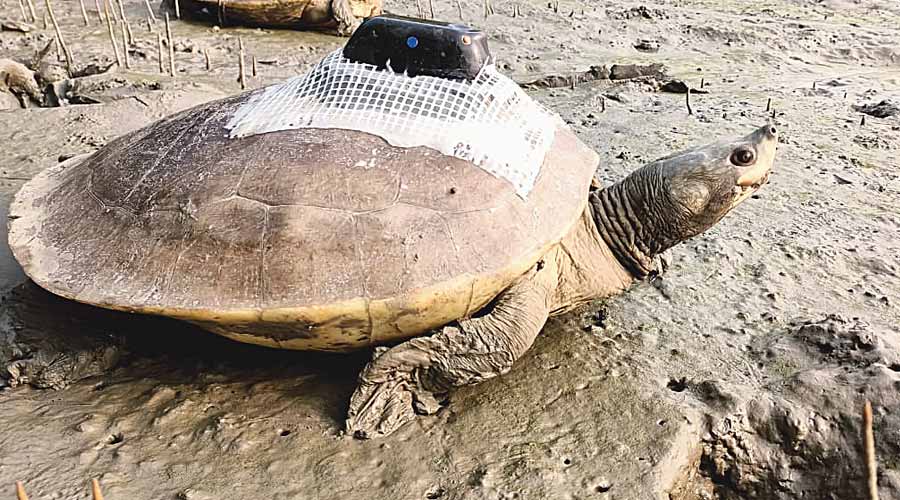Rare turtles that have made a habit of traversing borders have prompted Indian foresters and conservationists to touch base with their Bangladeshi counterparts for a joint conservation effort.
The northern river terrapins (Batagur Baska), found in the Sunderbans and termed critically endangered by the International Union for Conservation of Nature (IUCN), have been brought back almost from the brink of extinction by a conservation programme by the Turtle Survival Alliance, a global organisation that works for captive management of freshwater turtles and tortoises, and the Bengal forest department.
The programme was envisaged in 2008 and breeding started in the Sunderbans 2012. From around 50 in 2008, their number is now close to 400. One of the primary reasons for the dip in their numbers was people killing them for their meat.
The first phase of the programme was completed in January this year, with the release of 10 turtles — born and raised in captivity — into the wild.
Ten turtles, fitted with manual transmitters, were released in 2016. But they failed to send any signals. “The turtles released this year were tagged with satellite transmitters. Four of them have made it to the Bangladeshi side of the Sunderbans after travelling hundreds of kilometres,” said Tapas Das, field director of the STA.
A meeting to take stock of the development so far and create a new vision plan for the next phase was held on Monday. Cross-border collaboration is part of the plan.
The vision plan also entails increased participation of locals in the conservation programme. “We want to incentivise locals (mainly fishermen) who return unharmed the animals tagged with transmitters or provide relevant information regarding them,” said Shailendra Singh, director, TSA, India programme.
The animal
Northern river terrapins feed on fishes, crustaceans and fruits of some mangrove trees. They are important to the mangrove ecosystem because of their role in “seed dispersal”, said Singh. The animals eat the mangrove seeds at one place and travel hundreds of kilometres and deposit them at other places (through defecation).
They also play the role of an indicator to the integration of different systems because the turtles are born in sea water, move into freshwater for foraging and move back to sea water for nesting, he said.
The number of river terrapins was hardly 50 before the conservation programme. Now, there are 12 adults and 370 juveniles spread across multiple centres in the Sunderbans. Seventy-five females will reach breeding age over the next five years, said an official of the Sunderbans Tiger Reserve.
“We want to establish a thriving wild population by releasing 500 animals by 2030,” said Singh.
Bilateral effort
Two of the turtles that made it to Bangladesh were caught by local fishermen and had their transmitters removed, said a forester. The other two are still sending signals.
The Sunderbans is spread across 10,000sqkm, a little above 4,000sqkm of which is in India.
Singh said Bangladesh was further downstream and the animals could have gone with the flow of the water. “Historically, the number of nesting banks have been more towards Bangladesh. The animals might just be exploring the area. Eventually, they can go anywhere because the Sunderbans on both sides are similar.”
Phone numbers on the back of transmitters removed from the turtles prompted the fishermen to call the TSA helpline. The turtles were handed over to the police who then sent them to the Bangladeshi forest department. The Indian side is trying to get the turtles back, said Singh.
The 2030 plan entails joint conservation efforts. “We want to work with the Bangladesh forest department. They have a conservation programme as well. We want to ensure the turtles are not harmed and transmitters not detached. A dedicated channel for exchange of information is on the cards,” said Singh.
